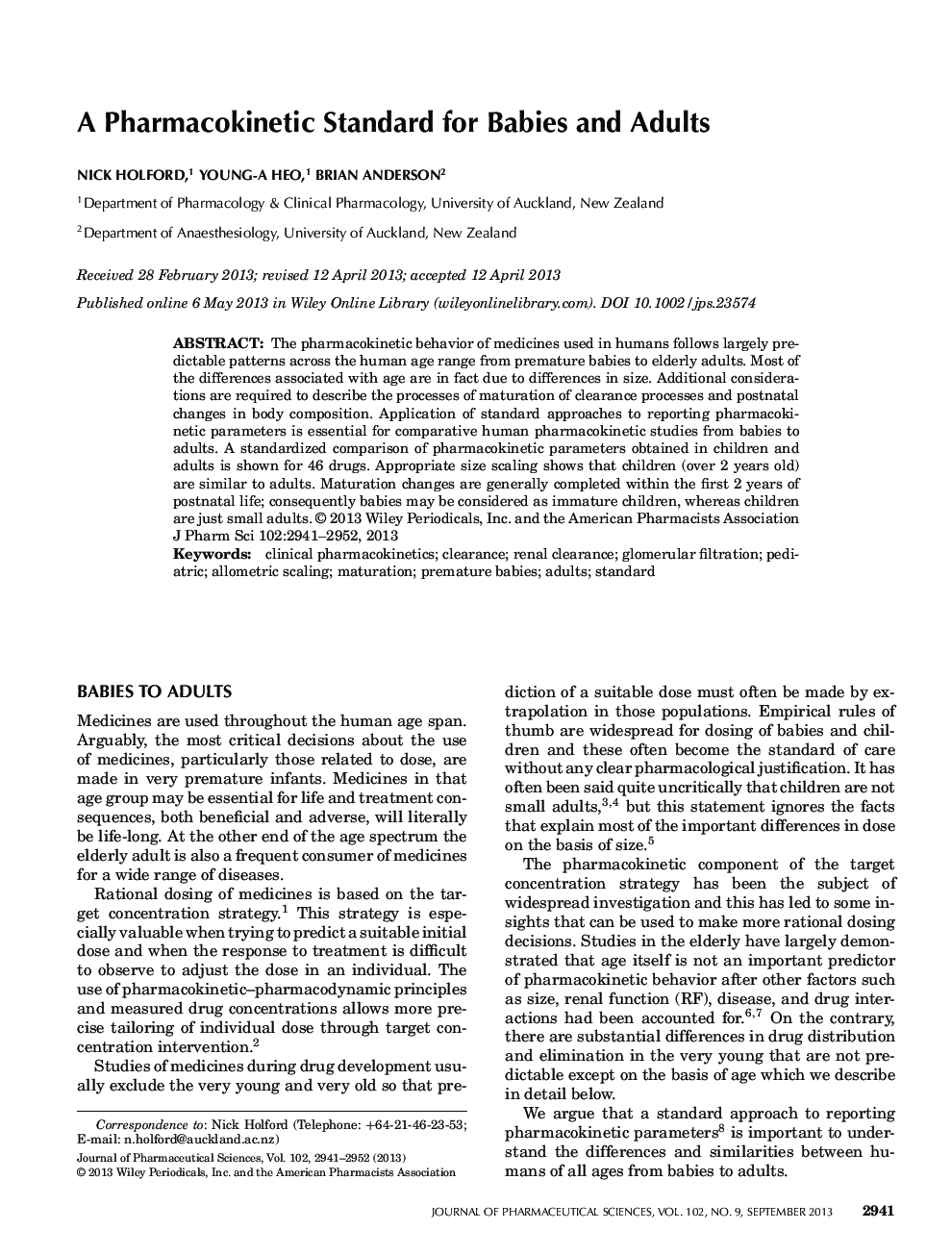| Article ID | Journal | Published Year | Pages | File Type |
|---|---|---|---|---|
| 2484816 | Journal of Pharmaceutical Sciences | 2013 | 12 Pages |
ABSTRACT:The pharmacokinetic behavior of medicines used in humans follows largely predictable patterns across the human age range from premature babies to elderly adults. Most of the differences associated with age are in fact due to differences in size. Additional considerations are required to describe the processes of maturation of clearance processes and postnatal changes in body composition. Application of standard approaches to reporting pharmacokinetic parameters is essential for comparative human pharmacokinetic studies from babies to adults. A standardized comparison of pharmacokinetic parameters obtained in children and adults is shown for 46 drugs. Appropriate size scaling shows that children (over 2 years old) are similar to adults. Maturation changes are generally completed within the first 2 years of postnatal life; consequently babies may be considered as immature children, whereas children are just small adults. © 2013 Wiley Periodicals, Inc. and the American Pharmacists Association J Pharm Sci 102:2941–2952, 2013
